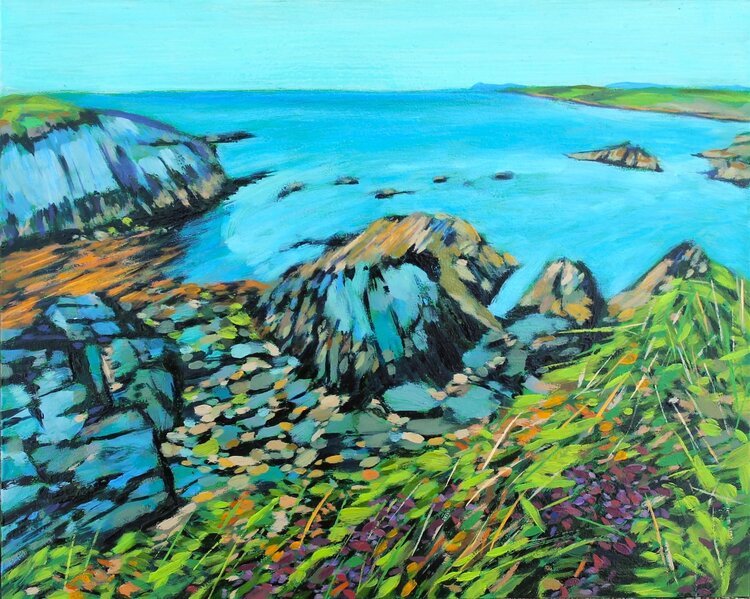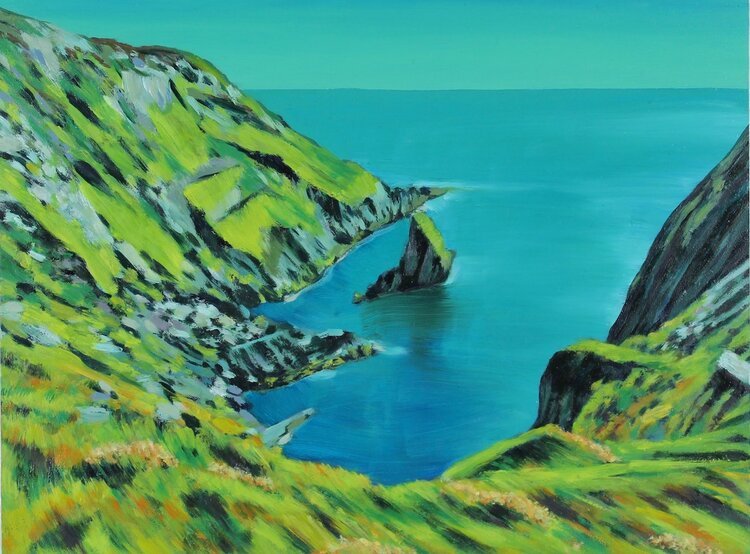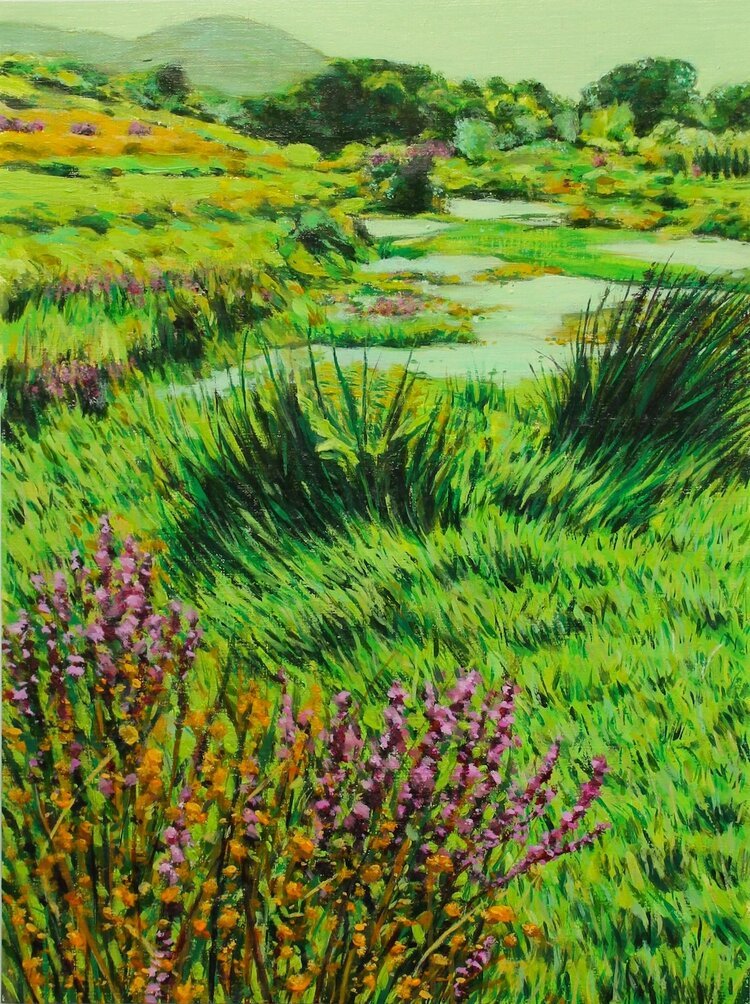Sean Gallagher












I was born in the city of Chicago and lived there for two decades, including attending the School of the Art Institute of Chicago and St. Ignatius College Prep; thereafter, I studied at Indiana University (B.A. – Honors English Literature; B.F.A. - Printmaking) and the University of Arizona (M.F.A. - Painting and Printmaking). I have taught as a Professor of Art at Central Connecticut State University since 1993, where I am currently Chairperson. I recently moved to Fairfield, Connecticut, after living in Brooklyn, New York (for twenty years) with my wife, Andrea, who is a senior health reporter at The Wall Street Journal, and my eleven-year-old daughter, Fiona, who sings spontaneously.
Website: Sean Gallagher
Instagram: @seanpatrickgallagherbrrrooklyn
What She Left and What She Kept May 26 -June 26, 2022
What She Left and What She Kept:
Sean Gallagher paints and draws a tribute to his grandmother and heritage of West Cork, Ireland in What She Left and What She Kept.
Gallagher’s grandmother, Sarah Gallagher (née Roycroft), emigrated in 1920 to NYC and then to Chicago with his grandfather, Patrick Gallagher, from County Mayo, due in part to the tensions between the IRA and supporters of Great Britain in West Cork; specifically, since they had a mixed-marriage (Protestant and Catholic).
Gallagher paints images of areas his grandmother most likely saw in her lifetime, adding accented color as a means of idealizing the specific places, a version of memory rather than actuality. The images offer a contemporary escape from the limitations of pandemic restrictions, to a more colorful, romantic, fantastic, and primordial place. “Just as my grandmother retained images of her ancestral land of West Cork in her mind, modifying it, over scores of years,” states Gallagher. Having visited these places several times earlier, he regrets being unable to return during these last two years of Covid. What She Left and What She Kept is dedicated to Sarah Gallagher.
These Wine-Dark, Warming Currents: These images display no horizon, no land beyond the vast, red waters. Width, greater than the height, suggests expanse laterally, a continual horizontal immersion. The “wine-dark” adjective is a reference to the often-used epithet describing the sea in the Odyssey and Iliad. It is possible this phrase was less a description than a useful poetic device as metaphor; however, via contemporary climate change and political currents, this metaphor becomes less romantic and more ominous.


